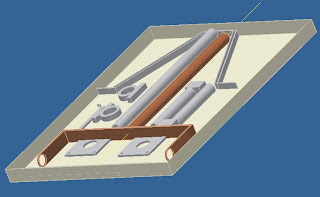let's start with the control:
first we choose PIC18F452 as our microcontroller because it was:
- Available
- Easy to program
- Low power
- High performance
- Large memory
- Re programmable
- And some technical specs
we wanted to have two different control methods:
- was the normal controlling using the angles equations
- Test case: to try it on the presentation.....for that we added 4 sensors in order to adjust the solar panel in the required place.
we will talk on details about these two controlling methods later...
The idea
was to get the best out of the tracking system....and the most accurate tracking was not the one done by equations, yet it was the most one used....why??
was to get the best out of the tracking system....and the most accurate tracking was not the one done by equations, yet it was the most one used....why??
because if we tracked using the sensors we will have a major problem; what if the whether turned cloudy??!!
the scenario will be something like that:
it's cloudy, so the sensors reading will go crazy for a while or will read equally. after a while the sun will have moved from it's place to who knows where. when the clouds are off, the panel will be facing wrong direction, and either will be able to readjust itself if the the sunlight was still seen by any of the sensors. or the sunlight will already be gone leaving the panel in its place till next day....and that's a major waste of possible energy which make it a major problem............however under normal whether conditions.....sensors are better trackers than angles......that's because it is a real time sun tracker, instead of pre-calculated angles which might be not accurate from a day to another.
our aim was two develop both tracking methods and then as a future adjustment to the traker; AKA if we had time :D, we would add a cloud sensor and use it's output as a condition to shift between the two tracking systems.
however we didn't implement this part for two main reasons:
- lack of time of course
- lack of the required sensor (we needed to have it deliver from another country) and that wasn't available because as I said........no time, plus not all the team was excited about the idea to be honest...most of them just wanted the whole thing to get done we 7'las :D
Well, after this quick outline, lots of brainstorming and online searching, they designed the circuit, picked the components required and two of the team went shopping :)
the remaining team member (as the control team consisted of 3 members) started to develop the code.
to be continued isA.....






